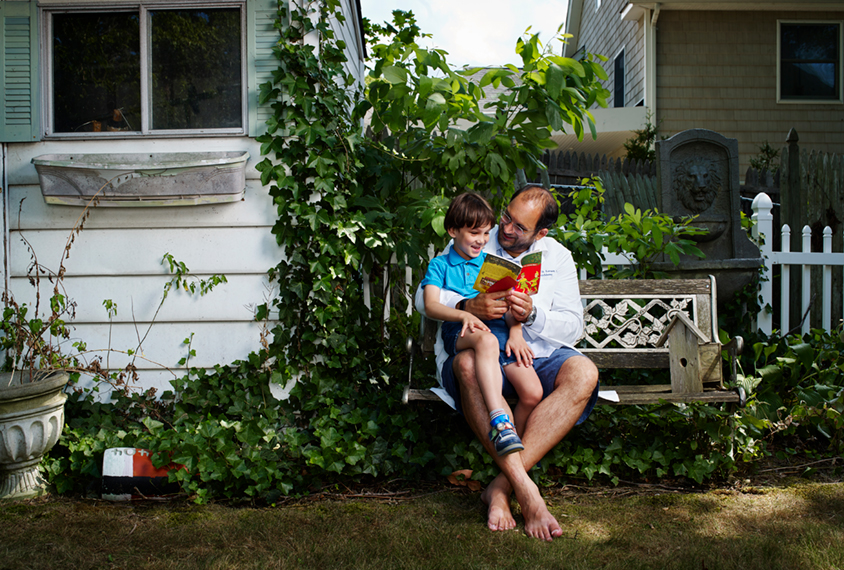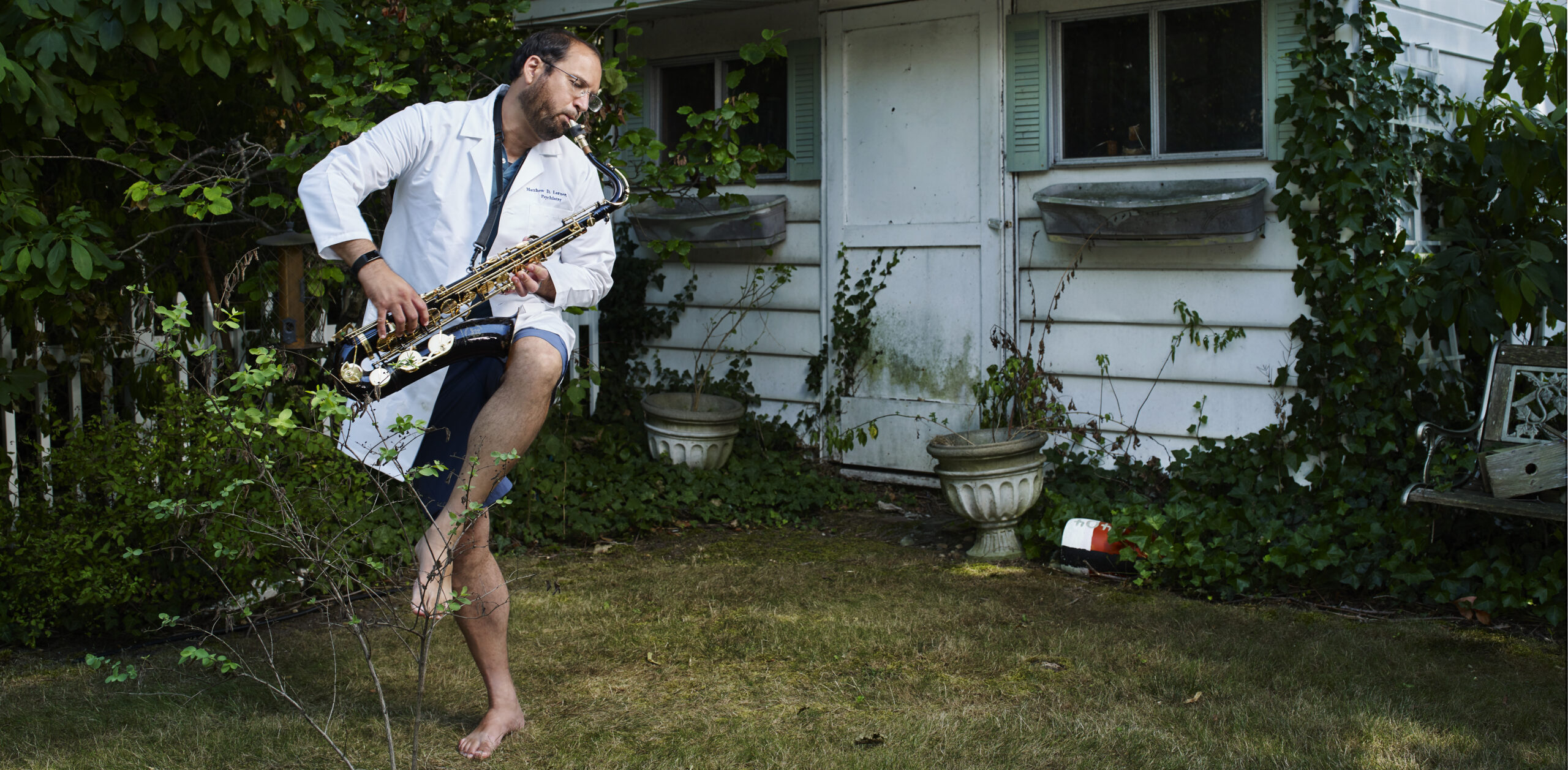Under normal circumstances, Matthew Lerner’s day is full of meetings with graduate students, postdoctoral researchers, clinicians and research participants. His work focuses on how autistic people navigate relationships and what factors can facilitate or impede meaningful connections.
Since the pandemic began, his days have taken on a new dimension: They’re still full of meetings, but now Lerner and his team are part of a massive global experiment on maintaining social connection while working remotely.
Some of their efforts, such as in-person mentorship programs for autistic teenagers, just aren’t possible with social distancing — and likely won’t be in the near future. But Lerner is optimistic that the autistic people who work with his team can teach researchers some lessons about forging social connection in a world that isn’t set up for it.
Spectrum: What is the big question that drives your research?
Matthew Lerner: For most people, being able to connect to others, make friends and develop meaningful relationships happens fairly effortlessly. But for some people, especially those on the spectrum, it can be really hard. So the thing that we want to understand here is, what are the factors that make that happen, that can either facilitate or get in the way? And then how do we use those insights to improve interventions and approaches that are both effective and respectful of the preferences of the population? And then finally, how do we get those things out into the world?
S: Whose work do you admire? And whom would you love to work with one day?
ML: Oh man, there are so many people whose work I admire in this field. In particular, Connie Kasari has long been a hero of mine. I feel like she’s always been about 10 steps ahead of everybody else who’s doing any kind of intervention work, and she was incorporating insights of autistic individuals into research on intervention long before most people thought of doing that. I’ve long hoped to work with her.
S: How much sleep do you usually get?
ML: Not enough. I would say if I get six hours, it’s a good day.
S: What does your day look like these days, during the pandemic?
ML: My wife actually works in the pediatric emergency room, so she’s busy. And so I’m basically trying to figure out how to get my kids some structure for the day and almost every day doing some combination of schooling and play, hopefully getting a little bit of fresh air every once in a while. And, of course, I have meetings every day with my students, postdocs, staff and colleagues so we can keep the lab going now; most of my day involves balancing this with childcare and cooking meals. Also, I have played saxophone since I was a child, and used to play in many different types of bands (jazz, ska, funk, experimental, rock, klezmer); while I don’t really have time to be in any bands right now, I hope to do so again one day, and for now I enjoy getting to play solo a bit whenever I can.
As somebody who studies social connection and social interaction, I find this sort of massive worldwide experiment in social distancing to be worrying and also interesting. Worrying just because we are a eusocial species. We do still need connection. So how we’re going to deal with being isolated from one another for an indeterminate amount of time is going to be hard. We’re already seeing all of these different ways people are desperately trying to innovate these connections, figuring out what means of connection works for them.
One thing it’s definitely doing is causing us to be more explicit and intentional about our social interactions. On the one hand, it may cause us to be more cautious. It may cause us to pause and maybe even be more empathic, to really think carefully about “Who am I talking to?” and “What are their needs?” and “How can I adjust; how can I calibrate to them?”
In our lab, we try really hard to integrate insights from autistic individuals. I’ve talked to a few colleagues of mine who are on the spectrum about how things are going during the pandemic. A few people have said, “I’ve been waiting for this for a long time, and I feel like I have a lot of insights to share with the neurotypical world about how to manage a more socially distant, intentional existence.” So, we’re trying to learn from them.
One thing we’ve learned from many of our studies is that because of some of the factors that can impact the ability to have fluid social-interactive behavior, autistic individuals are more practiced at being intentional. This is something that we really might be able to learn from our autistic friends and colleagues: how to better manage in a world that looks like this.

S: How do you stay productive?
ML: I try to find time where I can, and I try to preserve time as well. The notion of protecting one’s time is really so invaluable and relevant here. There’s a great book by the psychologist Paul Silvia called “How to Write a Lot.” It’s a slim little volume, and it’s one of the best guidebooks for productive writing. Also, Andres De Los Reyes of the University of Maryland has a new book called “The Early Career Researcher’s Toolbox,” which gives guidance on productivity and finding your voice in research and how you’re to do all this — the mechanics of all of it.
Both Paul and Andy have similar advice, which is finding some time — even if it’s 10 or 20 or 30 minutes — on a regular basis to be your writing time and making sure that it is unencumbered. And also realizing that writing doesn’t necessarily mean literally putting pen to paper or fingers to keyboard. Writing can mean just taking time to think about your science and the questions you’re asking, or taking time to read related articles or formulate your thoughts. So when you approach it that way, when you’re creating those little 10-minute windows, you can forgive yourself if at the end of it if you haven’t written 500 words.
I usually write at home at night, during my ‘second shift’ (i.e., after my kids are in bed). Sometimes I’ll do writing with my graduate students when we meet. Or we’ll sort of sit down and be like, “Alright, let’s pick apart this arc. Let’s figure out how we’re going to make this case as clearly as we can.”
And then in terms of background stuff, I usually toggle between, like, a Pandora or some kind of background music station without words. Or sometimes, and Andy De Los Reyes actually talks about this in his book, there are some movies or TV shows that I just like a lot and know so well that I can have them on in the background and it’s almost like they don’t have words.
S: What do you put on the TV?
ML: “Star Trek: The Next Generation” is my current one. “30 Rock” and “How I Met Your Mother” are great ones. Many of the Marvel movies are good ones for me, as well as Star Wars movies.
I used to beat myself up about this because I felt like I have all this stuff to get done, but I need to decompress. Just listening to ambient music is not enough to really decompress, but there’s just not enough time, and then I realized, hey there are some things that I enjoy just fine, and yes they have words but I can still get that benefit, that relaxation, and also that dopamine burst of something I really enjoy, and pair it with my writing.
S: What are you reading right now?
ML: I read The Atlantic magazine a lot, pretty much everything that comes out. I started reading “The Magic Treehouse” series with my son. It’s sort of like the one-generation-younger Harry Potter, similar stories for slightly younger kids. It brings me so much joy to read with him — we look forward to it every night.
As for academic journals, mostly I’m reading what my grad students bring me, or the articles I review as a peer reviewer or editorial board member.
S: Are you active on social media?
ML: I am on Facebook and MeWe, but I’m not on Twitter. I’m trying to get more active on MeWe because I’m trying to figure out if it’s possible to get off of Facebook. MeWe is one of these new platforms that’s much more transparent about what they do with your data. I’m trying hard to believe that Twitter doesn’t exist, but I don’t know how long it’s going to last. Right now, paradoxically, social media is the main way that many of us are connecting with one another.
S: What do you eat or drink while you’re working?
ML: Coffee. A lot of coffee.
S: How many unread emails are in your inbox right now?
ML: 70.
S: That’s not too bad.
ML: —70 threads.





